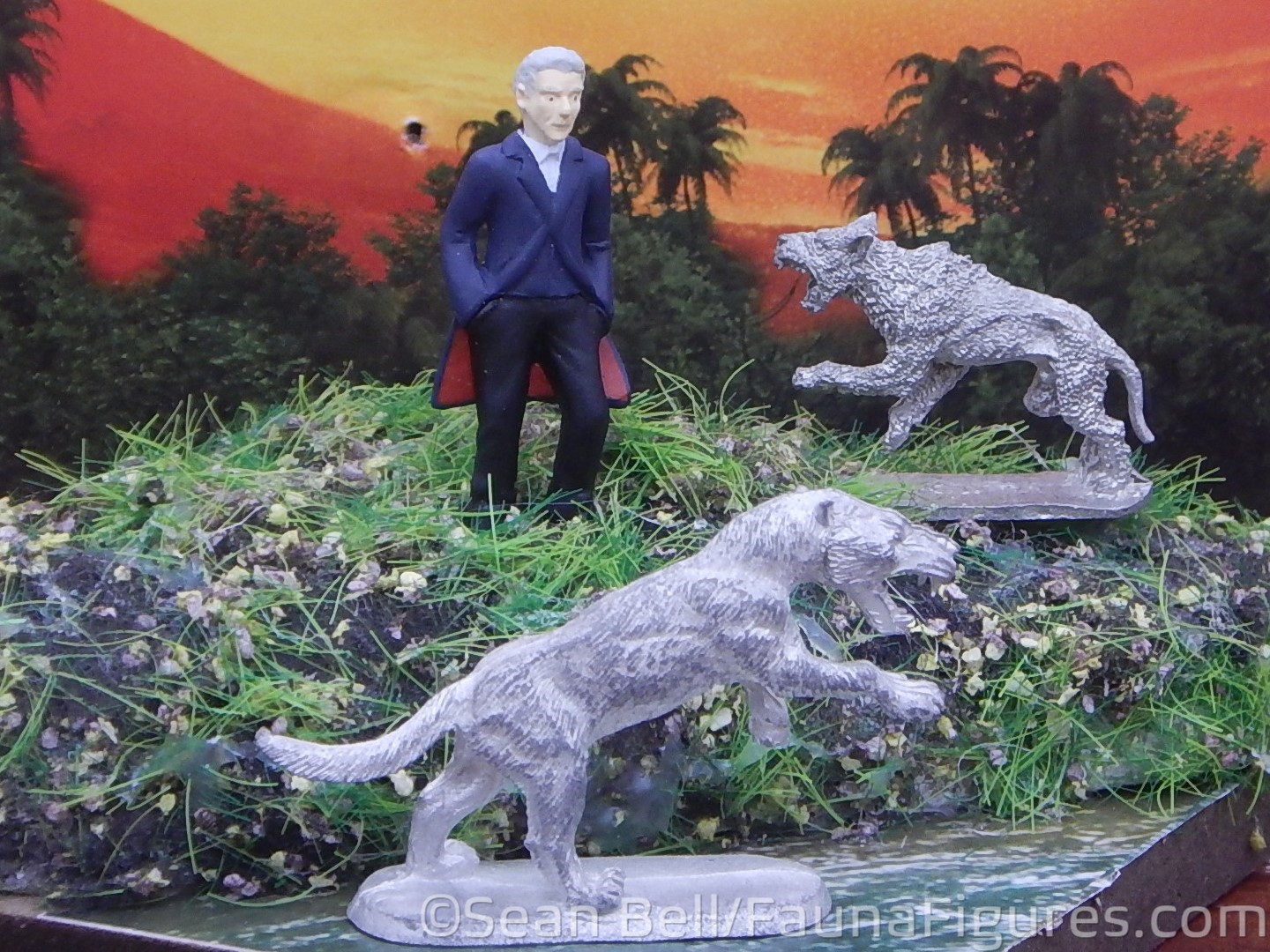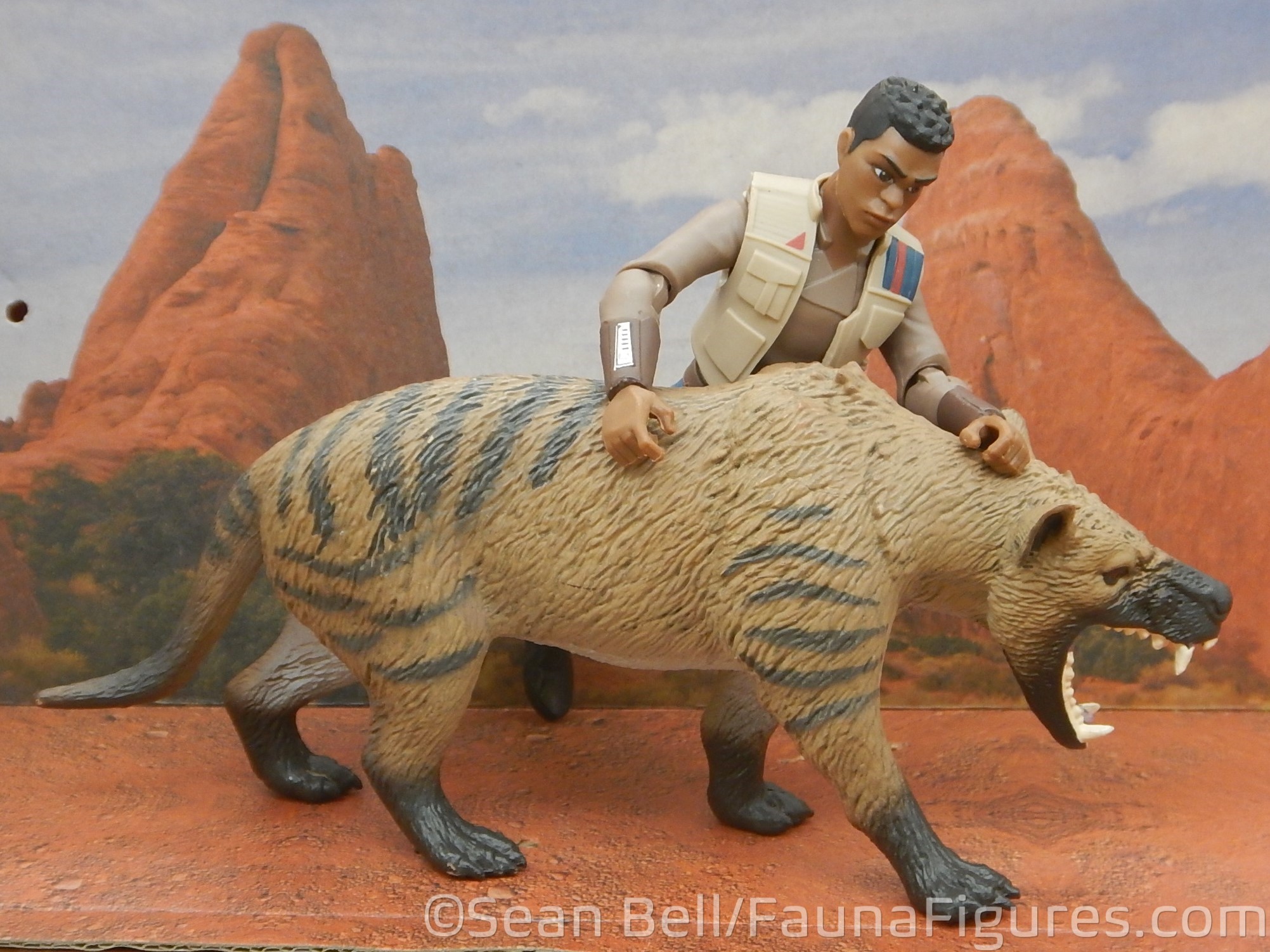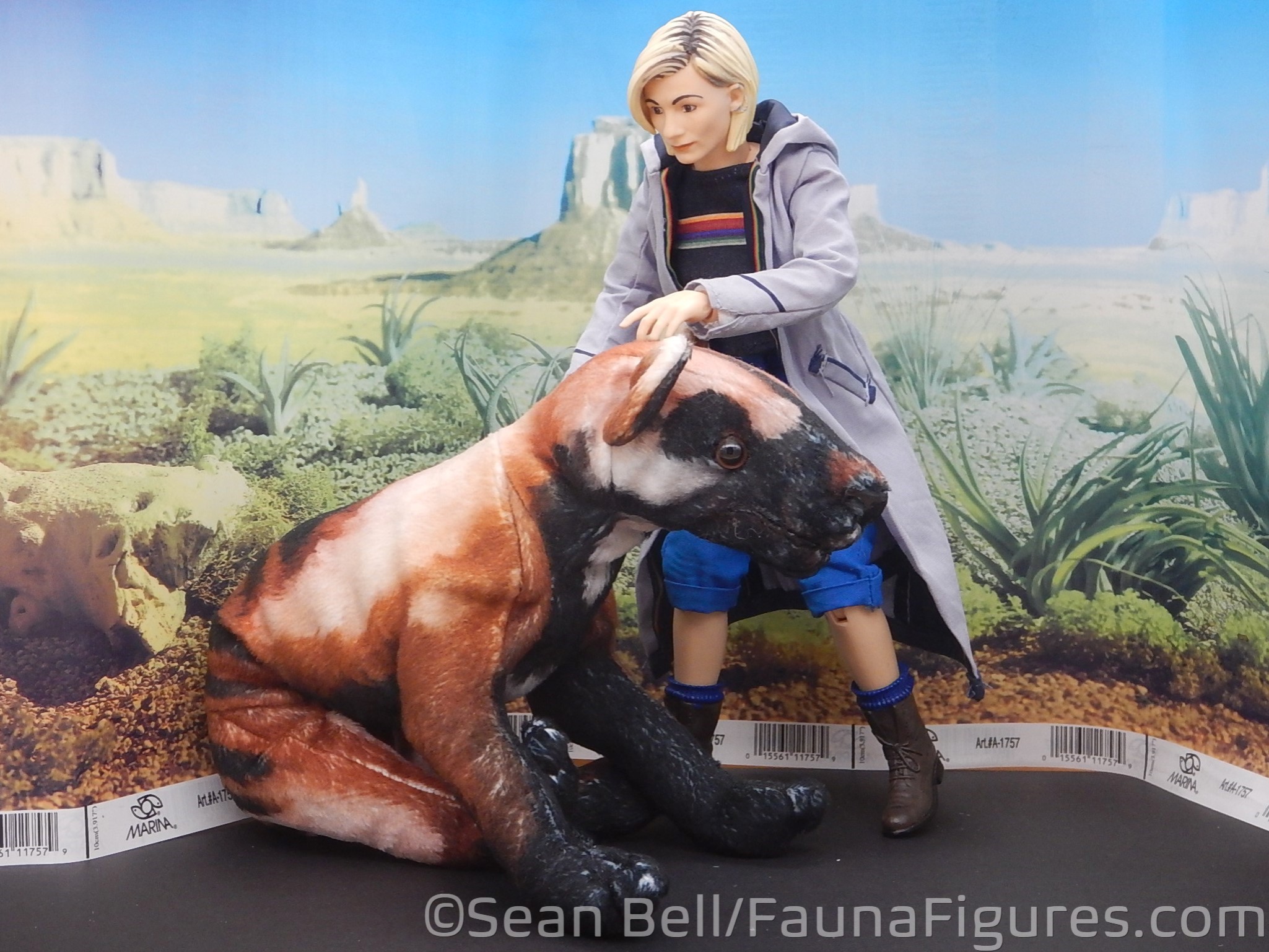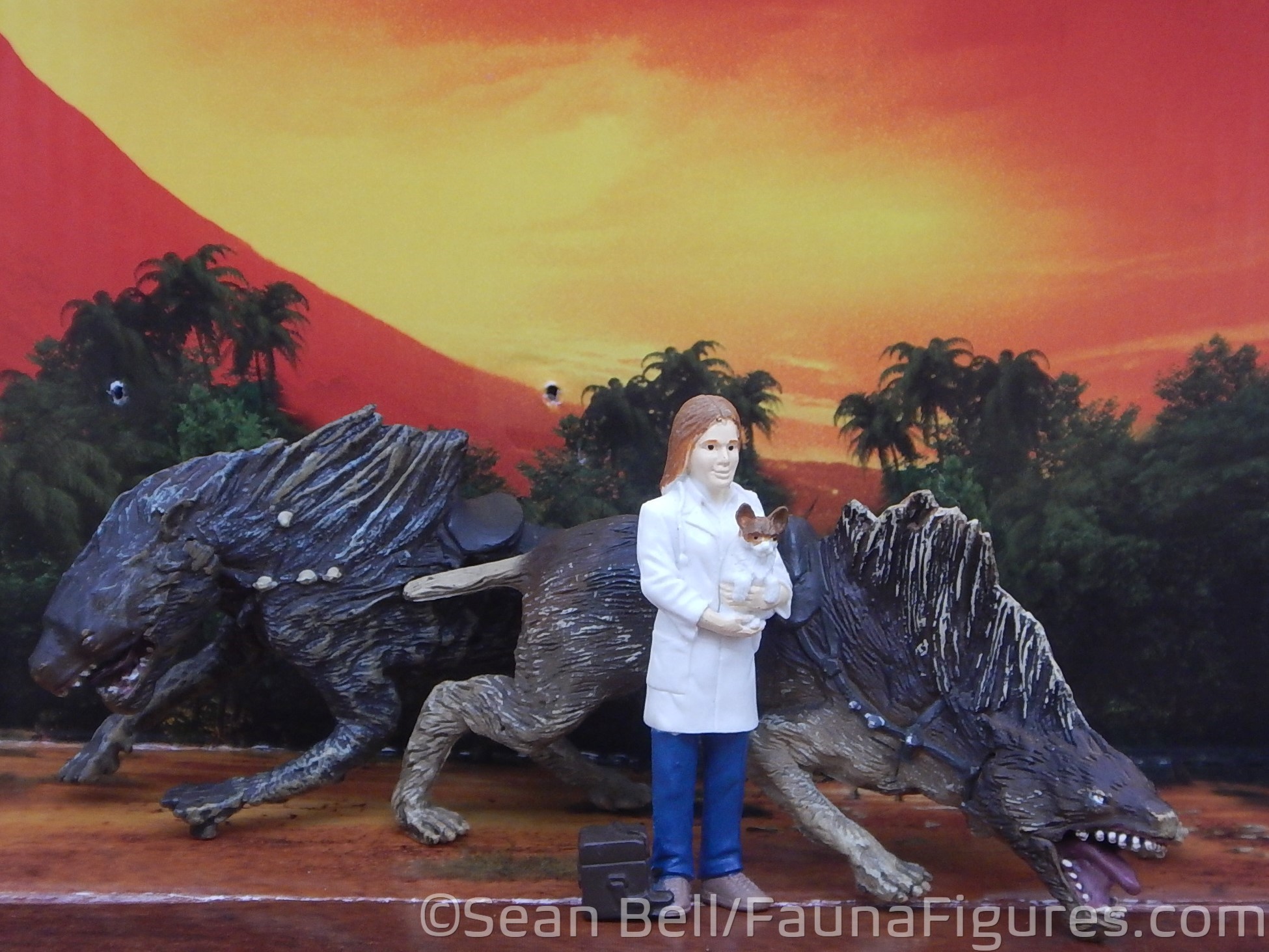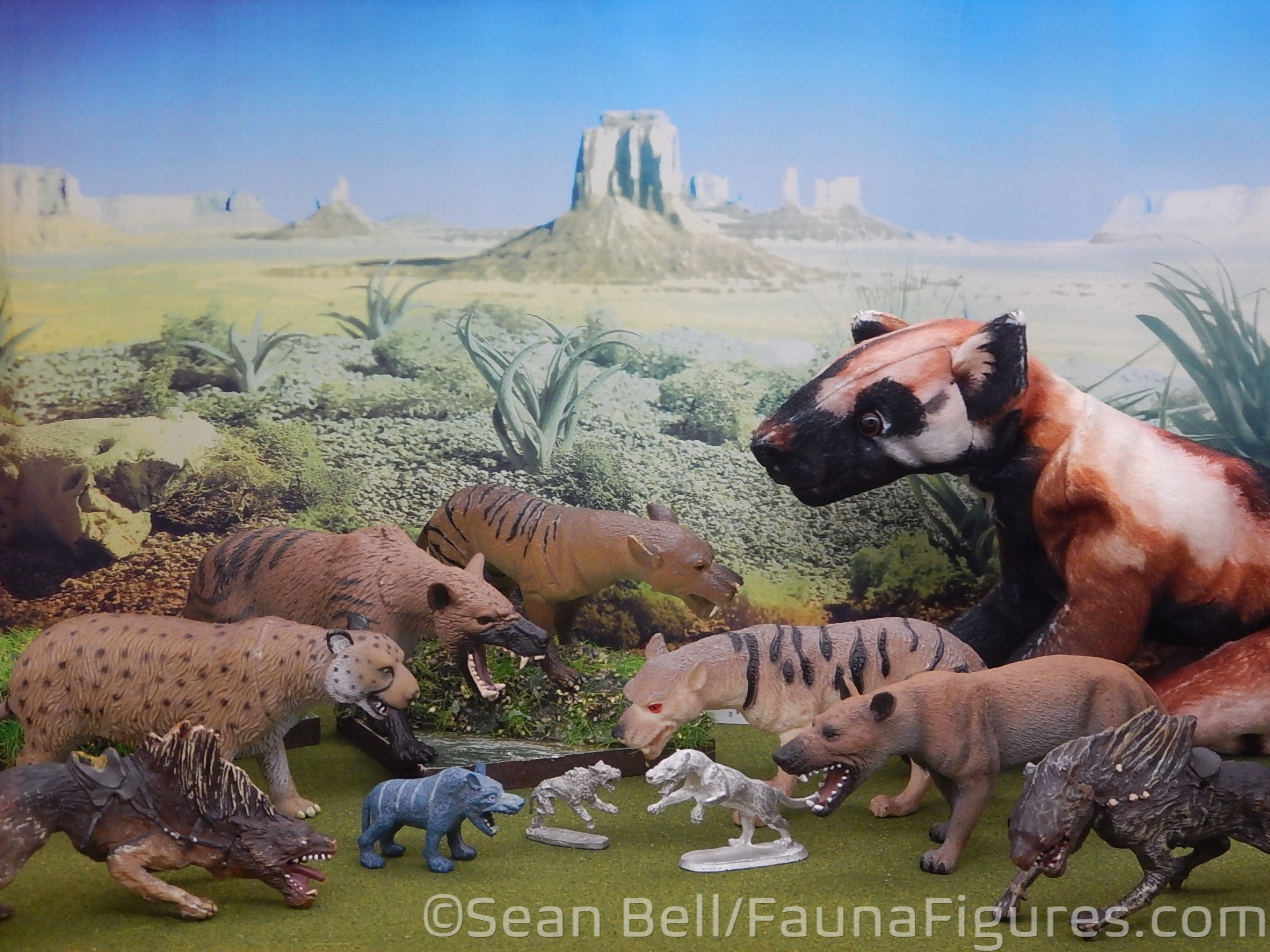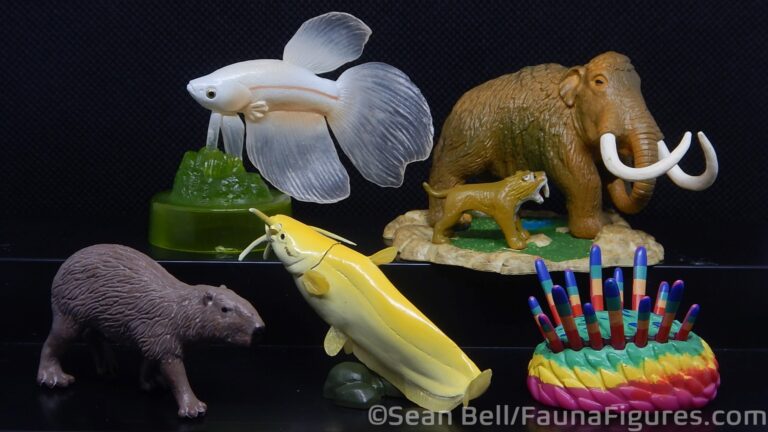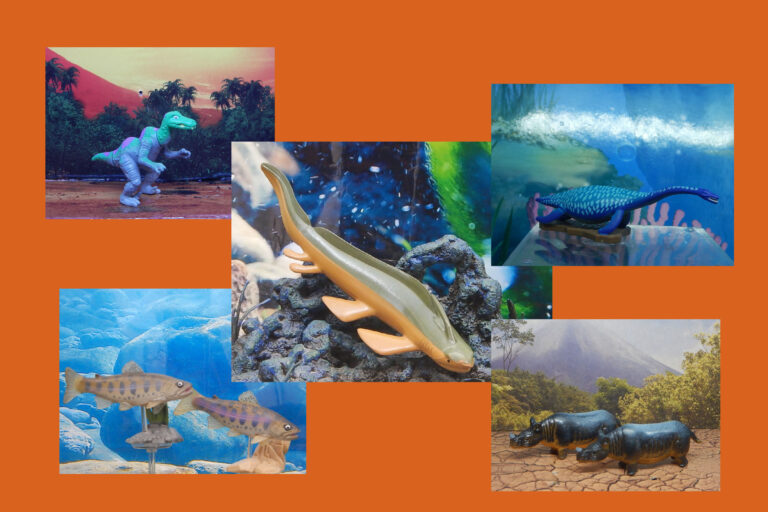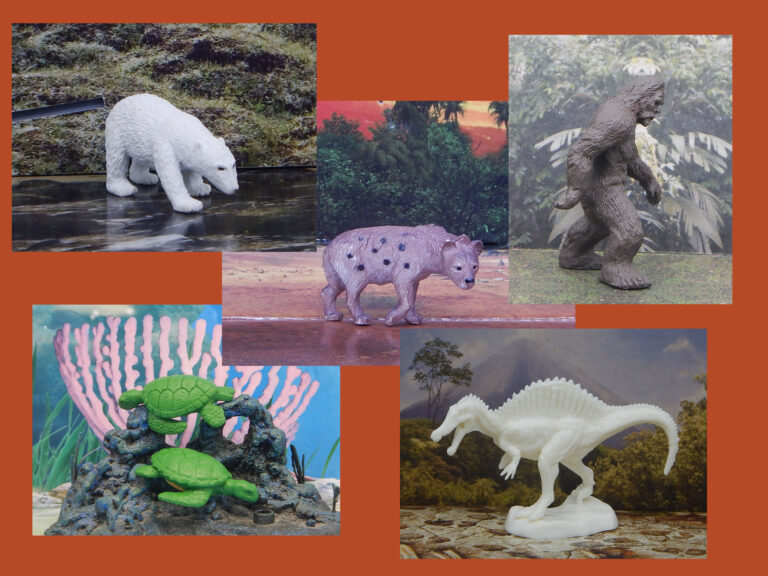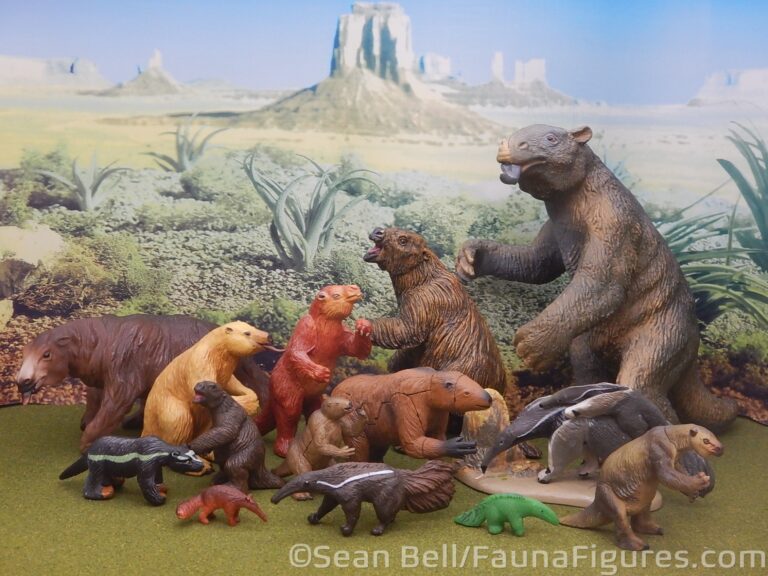So here I am, with post number 200! That seems crazy! And for this one, I get to look at a clade that I find pretty interesting, and which until recently didn’t have a whole lot of representative figures! I am referring to the stem group of the clade Pancarnivora, a group that includes all of our modern Carnivora (cats, hyenas, mongoose, dogs, bears, etc) plus their sister group, often referred to collectively as Creodonta. I think this is still an appropriate group name, but there are probably some details that need sorting.
The group is generally split in Hyaenodonts and Oxyaenodonts; despite that ‘hyaena’ in the name, they are not really all that related, although depictions sometimes hew kind of close. In terms of figures, I don’t think any models that are officially named and identified are made that aren’t Hyaenodon although there’s quite a variety in how they look. I am not aware of any official oxyaenodonts (but there is one model that may sub well, I’ll get there). As a group, these basal pancarnivorans are not especially familiar, although the BBC did included them in their Walking with Beasts series (or Walking with Prehistoric Beasts in some places, same thing). The first, and for a long time only, true toy of this animal was made several years later by AAA in two sizes (I only have the smaller one) as well as an Entelodon; both were very, very inspired by the documentary.
The basal pancarnivorans/creodonts first appear in the Palaeocene of North America, and were able to spread throughout Asia and Europe, then Africa where they survived latest, until the late Miocene. They are united with teeth that are clearly those of carnivorous animals, similar but convergent to the dentition of modern carnivorans. They ranged in size from small cat to very, very large (as much as 800kg!). In their long history, they competed with a range of other carnivorous mammals including entelodonts and mesonychids, but eventually gave way to modern carnivorans. There are of course a wide variety of species, but the only one produced by anyone is Hyaenodon horridus (except for one H. microdon, as a plush sculpture!).
Overall, as a group, this is one of those prehistoric animal clades that is just interesting and familiar enough to get attention form toy companies, and being carnivores that look kind of scary probably helps. The depictions have improved over time, giving them a more distinctive look than ‘heavy hyaena’; it would be nice definitely interesting to see some of the other species, like the giant Sarkastodon, as figures. I hold out less hope for the smaller species of course, although that would be great, maybe even better. But at least there are some, and Hyaenodon still gets made (I know of at least a couple others…and even have one on it’s way right now!). It’s good to know that anyone interested in prehistoric mammals could add one to their collection, although looking for smaller models will be more difficult. Still, it’s great to have one of these ‘basal’ groups at least readily available.

